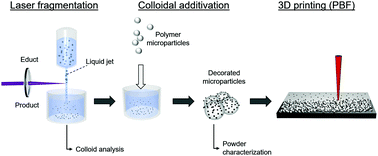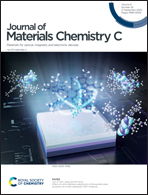3D printing of magnetic parts by laser powder bed fusion of iron oxide nanoparticle functionalized polyamide powders
Abstract
The development of new feedstock materials is a central prerequisite for advances in Additive Manufacturing (AM). To increase the breadth of potential applications for 3D and 4D printing of polymers, micro- and nano-additives incorporated into the feedstock material play an important role. In this context, magnetic materials are of great interest. Our study describes a way to fabricate polymer powders for laser powder bed fusion (PBF-LB) with a homogeneous, well-dispersed coating of iron oxide nanoparticles. Without the addition of chemical precursors, spherical superparamagnetic FeOx nanoparticles with monomodal size distribution below 10 nm are generated from FeOx micropowder by laser fragmentation in liquid. The adsorption of the nanoparticles on polyamide (PA12) powder is conducted directly in an aqueous dispersion after laser fragmentation, followed by drying, powder analysis and PBF-LB processing. Via Mössbauer spectroscopy and magnetometry, we determined that the saturation magnetization and structure of the iron oxide nanoparticles were not influenced by PBF-LB processing, and the magnetic properties were successfully transferred to the final 3D-printed magnetic part.



 Please wait while we load your content...
Please wait while we load your content...